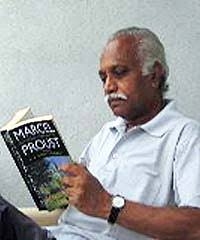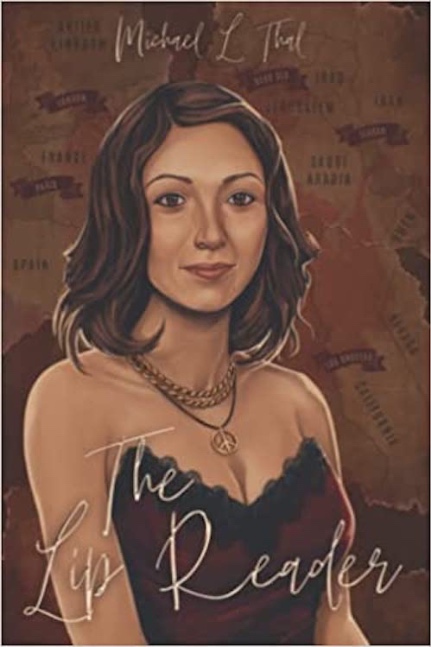- Home
- Articles
- State of Art
State of Art

The Indian legend has it that goddesses Lakshmi and Saraswathi respectively bestow wealth and learning on earth. It was the belief that both the goddesses would never bless the same soul. Such was their mythical rivalry that each would deny her munificence to the one under the other’s patronage. In the popular perception, the phenomenon of the rich merchant and the poor pundit was supposedly the manifestation of the goddesses at odds. Thus, the merchant accumulated wealth, however contributing to the commerce, while the pundit enriched society through his knowledge, himself remaining impoverished, nevertheless, both seemed reconciled to the enmity of their respective patrons in heaven as they got their share of recognition on earth.
This divine separation of commerce and arts that was the norm till the recent past was the source of the enrichment of the latter on the Indian soil, maybe everywhere on the planet earth. As there was no money to make in the pursuit of arts, it was the passionate that embraced art to embellish it with devotion. Thus, avoided by motivated suitors, art got wedded to talent as the Muses blessed the match. In that happy union, talent courted art with passion and tended it with devotion as a means of self-expression. In the end, the artist got his due as well, feeling self-enriched by the appreciation of the knowledgeable.
Leave alone the classical arts, this art and talent union manifested itself in the modern medium of cinema even as it arrived in India. Only those with passion for acting made in to the sets braving the stigma attached to the performing arts by the then prevailing cultural orthodoxy. In the nascent stages of the Indian writing in English, a young R. K. Narayan was passionate about his writing even at the risk of being a parasite on his family. Well, the list of those artists who pursued or are pursuing art for the sake of art could be exhaustive but the story is not about the artists but it is about the state of the art, indeed the society, in India today.
When Gandhi gave the call for freedom, those that joined the fray came prepared to forgo everything. Politics was not a paying proposition than and sacrifice was the creed of the freedom fighter. And what talent the struggle attracted is reflected in the galaxy of statemen we have had then. It can be said without contradiction or exaggeration that in the annals of the world history, as many exemplary men in a generation or two were produced in any country as in India in that era. Well, that would only happen when passion weds purpose. But what if expediency replaces passion in the political marriage is a public knowledge now. Though not so apparent, this is the case with the state of art as well in India today. The harbinger of wealth and the progenitor of knowledge seemed to have made up in the swarga, and ironically that occasioned the dichotomy in the theatre of arts on earth.
Let us examine the literary scene to start with. When the masters rendered those classics of yore, literacy of the times was limited to the core. Invariably that confined literature to the connoisseur and kept it away from the crassness of the masses. However, it is the increase in literacy that paradoxically caused the degradation of literature! With the multitudes of the educated abounding, publishing appeared a fetching proposition to the enterprising. After all, business acumen is all about catering to what the market demands, isn’t it? Understandably the masses demand but commonplace reading for easy comprehension! It's thus the induced demand for time-pass reading required customized writing, which insensibly pushed the frontiers of literature to the doorsteps of wordsmiths. Inevitably in due course, creative authorship gave way to the imitability of the in-vogue writing. That made RK Narayan lament that what was being peddled in the name of writing is but mere documentation.
In order to penetrate the book market, the publishers came up with the stratagem of promotional campaigns bringing authors into the media fore. This insensibly glamourized authors thereby attracting the aliens into the arena of writing though publicizing the book is one thing and promoting the author is another. Not to miss out on the new openings in the book trade, some of the opportunists in the west came up with courses in creative writing for aspiring authors thereby putting art on the assembly line and successfully at that! The net result is not hard to imagine what with everyone throwing his tailored manuscript into the publishing ring. And to cope up with the author rush that they helped create, the publishers would need an army of editors, which of course, the economics of publishing wouldn’t permit. The corollary is the need to offload.
It’s thus, the newfound job work opportunity in book manufacturing created the species of literary agents. Thus, the literary agent took it upon themselves to sort out the publishers’ mail and the face of book publishing assumed a new dimension. The editorial judgment of yore gave way to the phenomenon of influence peddling as the editors conceded their literary ground to literary agents. While the system bred laziness in the editorial department is empowered the agent who could well boast that getting his mod is a good as being published! After all, the agents are aware of their ability to make the editors lean towards the manuscripts they canvass for. One could imagine the scope of the trade what with hundreds of thousands of manuscripts making the rounds. It is but natural that a spurious agent would surface sooner than later to fleece the gullible writers. In spite of the individual’s causalities, the agent system seems to work well in the western mass publishing industry.
Let us see how things stand in the arena in Indian writing. It is possible that some of the best writing comes from the less literate areas like Orissa if we were to go by the citations of the National Sahitya Academy. No wonders why since in less aware areas he absence of publicity keeps the imposters away from literary pursuits leaving the arena for the genuine to pursue as a means of self-expression. However, when it comes to the Indian writing in English, it appears that the media’s penchant to glamorize the writers doesn’t seem to help the cause of literature. The well-intended book promotion tends to degenerate into promoting the author instead so much so that the book gets pushed to the backburner. The media focus enters on the persona of the author without touching upon the nuances of his writings. It’s as if the book is but a launching pad to catapult the author into the obit of fame.
Well, persona centric publicity could be the raison d’être of show business but it’s the worth of the writing that is at the core of an author’s existentialism, isn’t it? No one seems to complain though about the state of things. Thanks to the coverage in the magazines, many may recognize the Indian writers in English even in a crowd but how many would answer the call to confirm they read their books. This author as glamour boy phenomenon promoted by the media has made many to fancy their chances by changing with their laptops. It is the documentation that emanates from their leisure time that inundates the Indian publishing arena for the most part. As a logical follow-up for stardom these market savvy would throw their weight around to try to jacket their labour in the book form.
Ironically the limited Indian market size seems to help these literary pirates to hijack the publishing agenda to have their way into the media. The market dynamics being what they are, the publishers have for long reconciled to breakeven through safety measures. Since nothing would sell any way beyond a nominal number, why not settle for the time-tested stuff is what seems to be the Indian English publishing credo. The market dynamics of nothing much to win and not so much to lose tend the publishers to settle for the known hands instead of scouting for the unknown talent. What if the Indian English market is one hundred thousand if a given book wins public favour? That is when the publishers would look beyond their friends in the hope of roping in the best seller!
It is thus: the limitations of the publishing arena seem to serve the ambitions of these aspirants. For now, the only marketing strategy of the Indian publishers seems to induce the celebrity of sorts to write and then restore to hype. It might help individuals to get published and become authors but that hardly helps the cause of literature. Given these constraints the lady editors and the marketing men at the publishing houses must be finding it had to find some publishing space for the genuine authors who come up with something original that might otherwise deserve their consideration. Wonder whether the editorial positions at the publishing houses are not lucrative enough for men to seek or the bosses would prefer not to suffer male egos in their presence. Understandably this women-only editorial manning could take away some of the objectivity in book selection. But publishers seem not to care.
If the Indian literature suffers in want, then plenty afflicts in Indian cinema. The mass adoration as opposed to the ostracism of yore accords the cine-star a preeminent position in society for the influential to make to the silver screen. This naturally leaves the potential thespians languishing in the shadows while the hams rule the roost in the film world. Here again in societies like Kerala where the craze for films is less frenzied in comparison the genuine actor has some chance to get a break. It’s no wonder that the national film honours, for the most part, reach the Kerala and Kannada films while the cinema mad Tamils and Telugus find themselves nowhere in the picture. As it appears it’s the fate of art to be hampered when fortune chases its parishioners. It is here the Indian painting stands apart. Paintings of M F Hussain and Tyeb Mehta might rake in millions in Chistie’s auctions but the average painter would consider himself lucky if the sale would fetch him the cost of the canvas. That is the reason why Indian painting hasn’t come into the domain of the fame seekers but still radiates in the shades of genuine talent limited that it might be.








